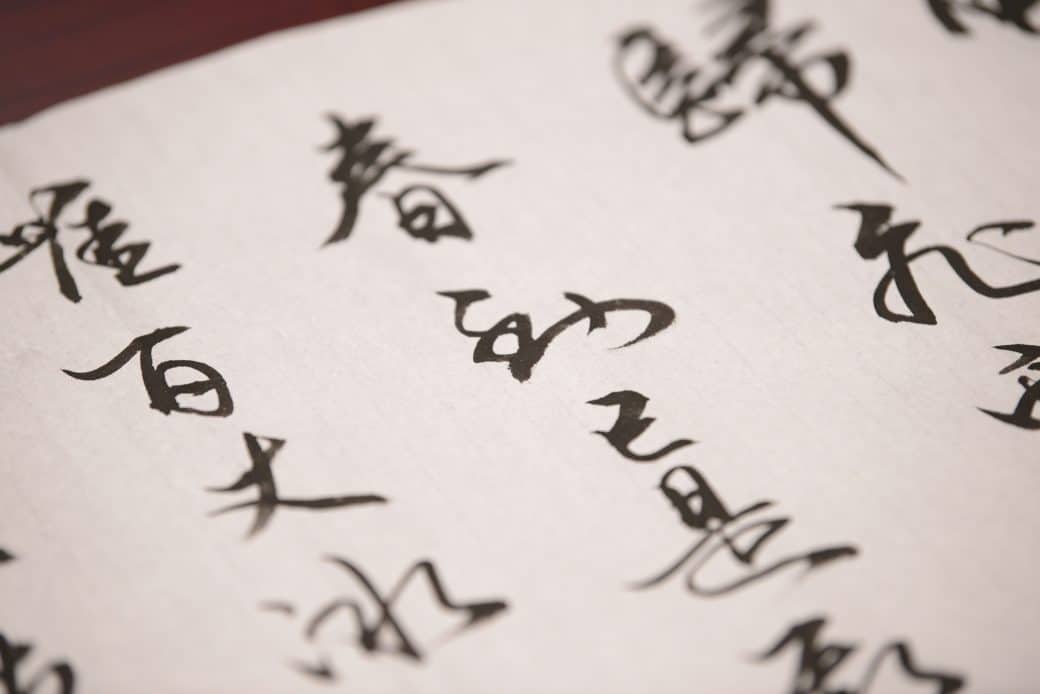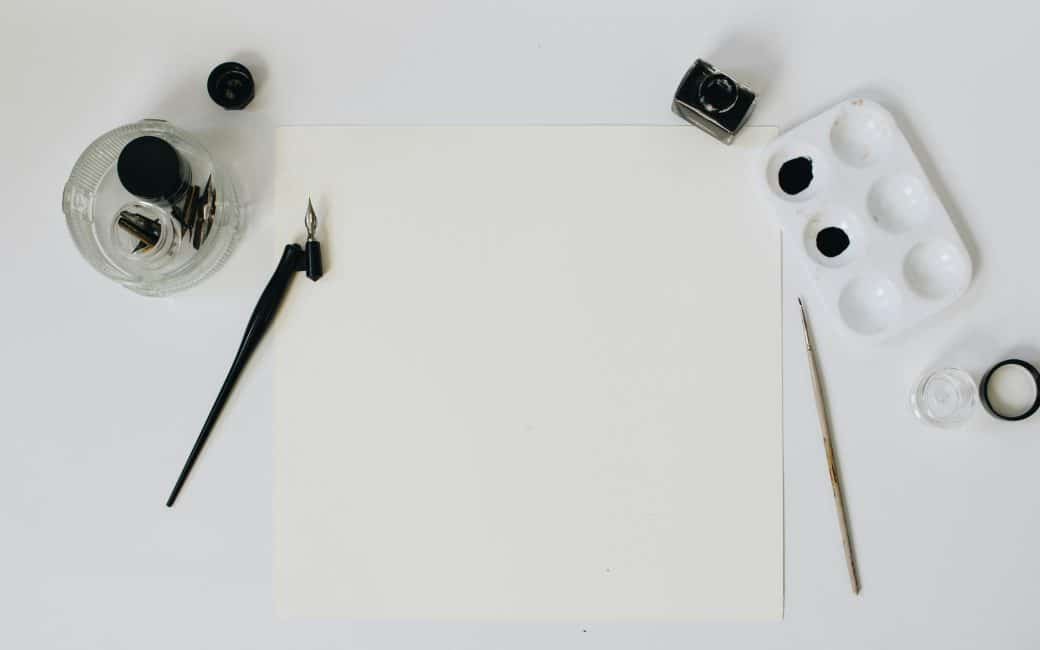I’m super excited to share my journey into the world of modern brush calligraphy with you! It’s been a fascinating adventure, filled with ups and downs, but absolutely rewarding. This ultimate guide is a treasure trove of everything I’ve learned about modern brush calligraphy techniques. From selecting the right brushes to mastering the fluid strokes that define this art form, I’ve poured my heart and soul into making this guide your go-to resource. Whether you’re a complete novice curious about getting started or someone who’s been dabbling and wants to refine your skills, you’ll find invaluable insights and tips that’ll elevate your calligraphy game. So, let’s get those brushes ready and transform your handwriting into an art form together!

Understanding Modern Brush Calligraphy
What is Modern Brush Calligraphy
Modern brush calligraphy is a contemporary form of artistic writing that uses brush pens or traditional brushes dipped in ink to create thick and thin lines, allowing for a unique and flowing script. Unlike traditional calligraphy, which often adheres strictly to established scripts or styles, modern brush calligraphy encourages individual expression and creativity. It’s a relaxing and satisfying art form that has grown in popularity significantly in recent years, thanks in part to the rise of social media and the desire for personalized, handcrafted art.
History and Evolution of Calligraphy
Calligraphy, in its various forms, has been around for centuries, evolving significantly over time. Initially, it served as a functional way to communicate before becoming an art form in its own right. From the intricate scripts of ancient Arabic to the precise characters of East Asian languages and the illuminated manuscripts of medieval Europe, calligraphy has always been a reflection of the culture from which it originates. The modern brush calligraphy that we know today, however, is a relatively new iteration, combining traditional techniques with contemporary flair and versatility.
Modern Brush Calligraphy Vs. Traditional Calligraphy
The main difference between modern brush calligraphy and traditional calligraphy lies in their approach and rules. Traditional calligraphy is more structured, often requiring years of practice to master specific scripts fully. Each stroke, letter form, and spacing is dictated by conventions developed over centuries. In contrast, modern brush calligraphy is much more forgiving and flexible, allowing practitioners to adapt their style as they go. This freedom encourages a level of creativity and personalization that traditional calligraphy often does not.
Choosing Your Tools
Understanding the Importance of Good Tools
In calligraphy, just like in any other craft, having the right tools is crucial. Good quality tools not only make the learning process more enjoyable but also allow for better end results. Whether it’s the brush, ink, or paper, each component plays a significant role in how your calligraphy turns out. Investing in high-quality tools from the start can significantly enhance your calligraphy journey.
Types of Brushes: Brush Pens Vs. Actual Brushes
Brush pens and traditional brushes serve as the primary tools for creating modern brush calligraphy. Brush pens, with their felt or synthetic tips, offer convenience and ease of use, making them ideal for beginners. They come in various sizes and colors, allowing for versatility in your work. Traditional brushes, on the other hand, provide a more authentic brush calligraphy experience. They require dipping in ink and offer more flexibility in stroke width but can be more challenging to master.
Selecting the Right Ink
The ink you choose can greatly affect your calligraphy. For beginners, using pre-filled brush pens might be the simplest option. However, as you progress, experimenting with different inks can be rewarding. Water-based inks are typically used for brush calligraphy, as they flow well and are compatible with most pens and brushes. The color and consistency of the ink are also important to consider, depending on the style and effect you’re aiming for.
Choosing the Perfect Paper Suited for Calligraphy
Paper is another crucial element in brush calligraphy. Not all paper is created equal, and using the wrong type can lead to bleeding or feathering of ink, ruining your work. Look for smooth, heavyweight papers specifically designed for calligraphy or marker use. These types of paper allow the ink to sit on the surface, ensuring crisp lines and preventing it from seeping through to the other side.
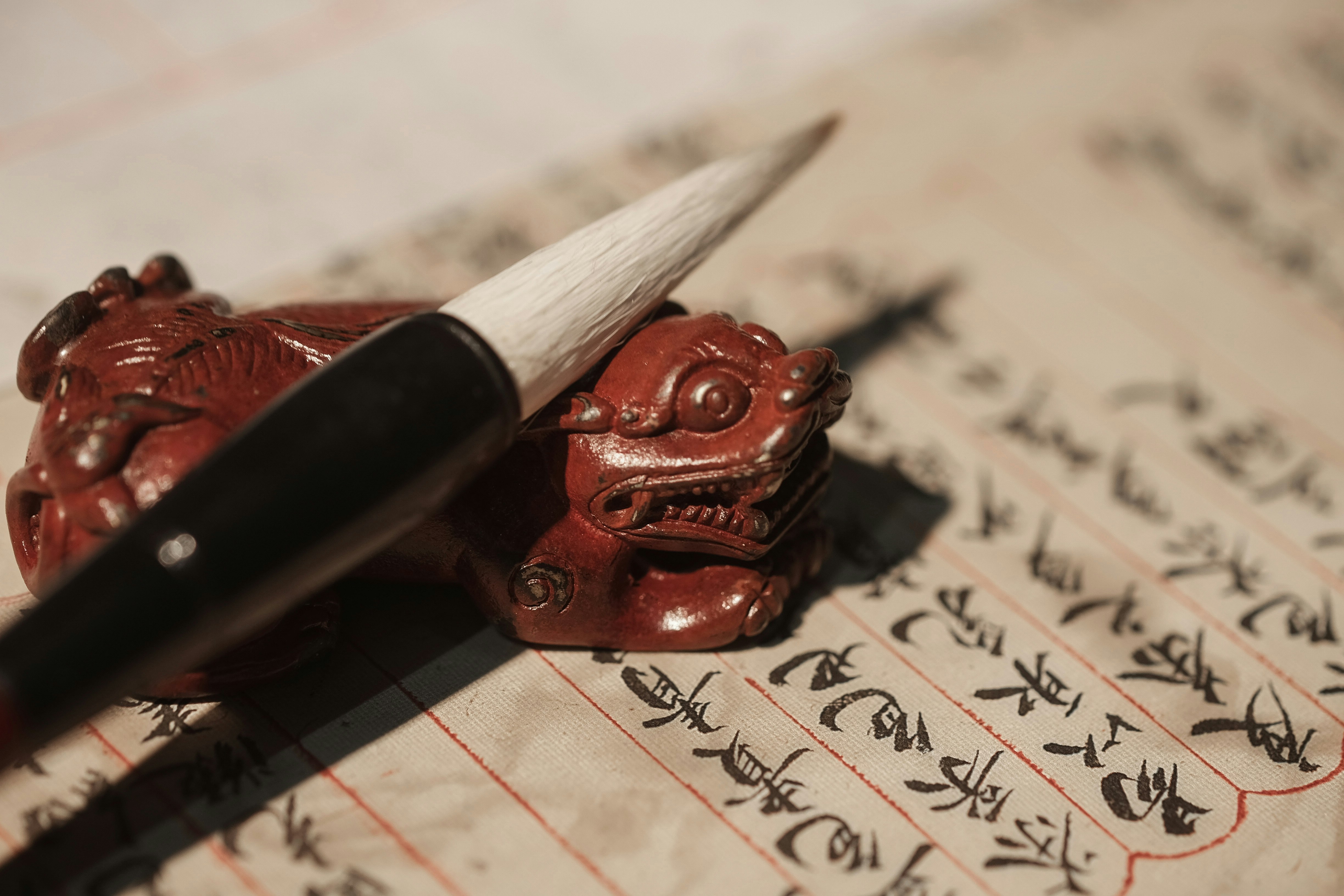
Basic Brush Calligraphy Techniques
Understanding Strokes
Calligraphy is essentially made up of basic strokes. These foundational strokes form the building blocks of all letters and characters. Understanding how to execute these strokes properly is the first step in learning brush calligraphy. Practice them individually before attempting to form letters.
Mastering Downstrokes and Upstrokes
Downstrokes and upstrokes are fundamental to creating the characteristic thick and thin lines of brush calligraphy. Apply pressure on the downward strokes to create thicker lines and lighten pressure on the upward strokes for thinner lines. Achieving a consistent contrast between these strokes is key to developing a visually pleasing script.
Creating Thin and Thick Lines
The variation between thin and thick lines is what gives brush calligraphy its distinctive style and fluidity. This variation is achieved by controlling the pressure applied to the brush or pen. It takes practice to develop a feel for how much pressure to use, but over time, it becomes second nature.
The Art of Shading
Shading can add depth and dimension to your calligraphy. It involves adding darker shades to certain parts of letters, usually where downstrokes occur, to create a sense of light and shadow. Shading can be subtle or dramatic, depending on the effect you’re aiming for.
Learning Basic Calligraphy Alphabets
Understanding Calligraphy Alphabets
Calligraphy alphabets are varied and numerous, each with its own set of rules and aesthetics. When starting with modern brush calligraphy, it’s important to familiarize oneself with the basic forms of letters. This understanding provides a foundation upon which to build and experiment.
How to Write the Lowercase Alphabets
Begin by mastering the lowercase alphabet, as it makes up the bulk of most writing. Focus on the basic stroke for each letter and practice until you can produce consistent and cohesive letters. Remember, the goal is not perfection but progress.
How to Write the Uppercase Alphabets
Uppercase letters in calligraphy often serve as statement pieces within a piece of text. They can be more intricate and require a thorough understanding of basic strokes and pressure control. Practice each letter individually, focusing on maintaining the style of your lowercase letters for a unified look.
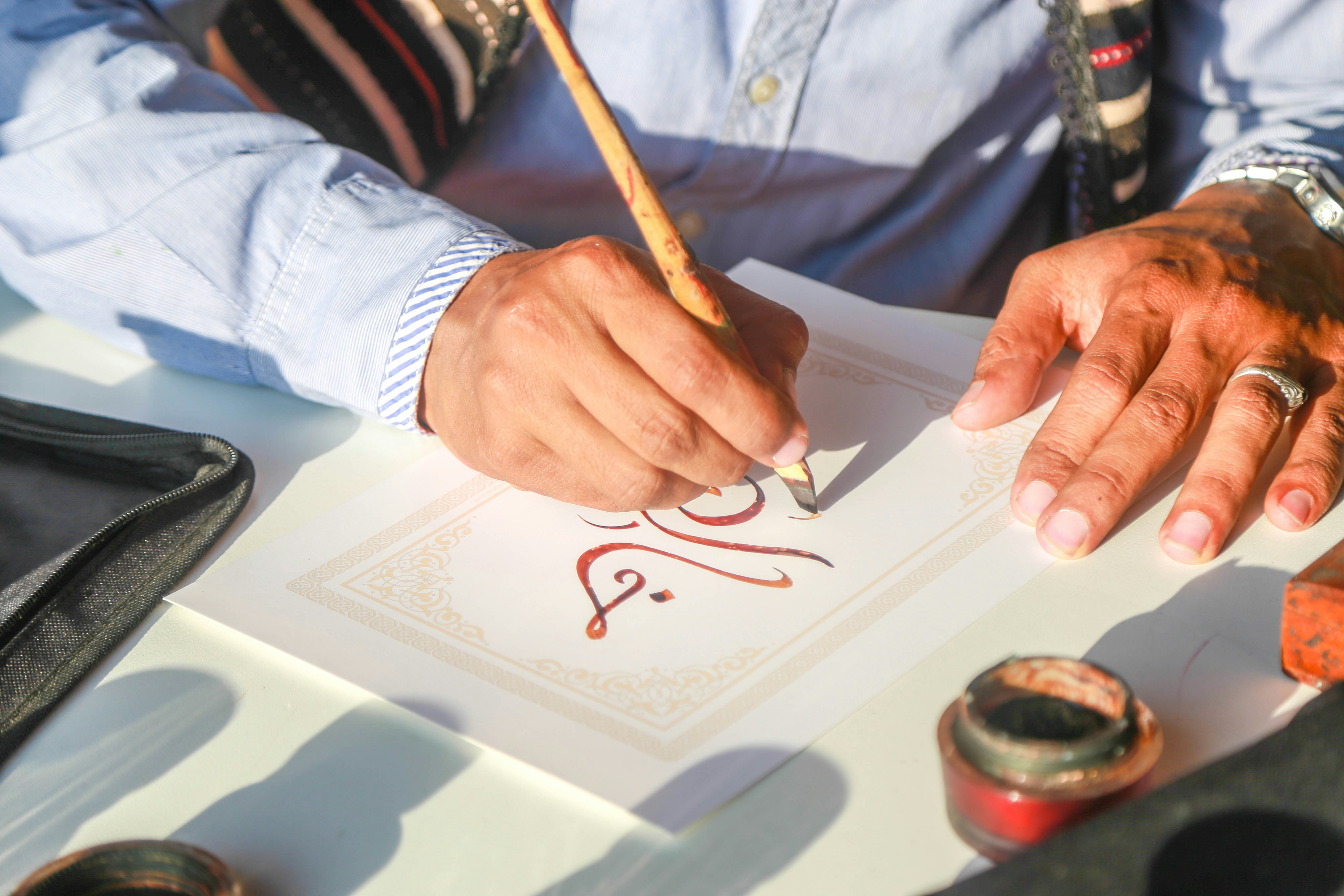
Creating Beautiful Calligraphy Layouts
The Importance of Layouts in Calligraphy
The layout plays a crucial role in the overall impact of a calligraphy piece. A well-planned layout ensures that the text is not only beautiful but also legible and well-balanced. Understanding basic layout principles can significantly elevate your calligraphy projects.
Structuring Your Layout
Start by sketching out a rough layout before committing to ink. Consider the hierarchy of your text, and use guidelines to ensure your lines are straight and evenly spaced. Planning ahead saves time and helps avoid errors.
Centering Your Words
Centering text is a common layout choice in calligraphy, offering a classic and balanced look. Achieving perfect centering can be tricky, but with the use of pencil guidelines and careful planning, it becomes more manageable.
Creating a Balanced Layout
A balanced layout is pleasing to the eye. Balance can be achieved through the distribution of text weight across the page, varying line lengths, and incorporating negative space. Experiment with different layout options to find what works best for your piece.
Calligraphy Projects to Try
Handmade Greeting Cards
Creating handmade greeting cards is a wonderful way to apply your calligraphy skills. They offer a personal touch that can’t be replicated with store-bought cards. Experiment with different styles and layouts to create unique and heartfelt messages.
Wall Art
Transform your calligraphy into wall art to add a personal and artistic touch to your space. Quotes, phrases, or single words can serve as powerful focal points in any room. The possibilities are endless, from minimalist designs to elaborate compositions.
Calligraphy on Ceramics and Glass
Calligraphy isn’t limited to paper. With the right tools, you can bring your letters to life on ceramics and glass. These make for unique home decor items or personalized gifts. Be sure to use appropriate inks or paints that adhere well to these surfaces.
Designing Bookmarks
Bookmarks are a simple yet enjoyable calligraphy project. They offer a small canvas to practice your skills while creating something practical. Incorporate inspirational quotes or individual names for a personal touch.
Creating Personalized Journals
Personalized journals can be a meaningful gift or a special treat for yourself. The cover offers a perfect canvas for calligraphy, allowing for customization with names, initials, or meaningful quotes. Inside, you can add calligraphed headers or accents to elevate the journaling experience.
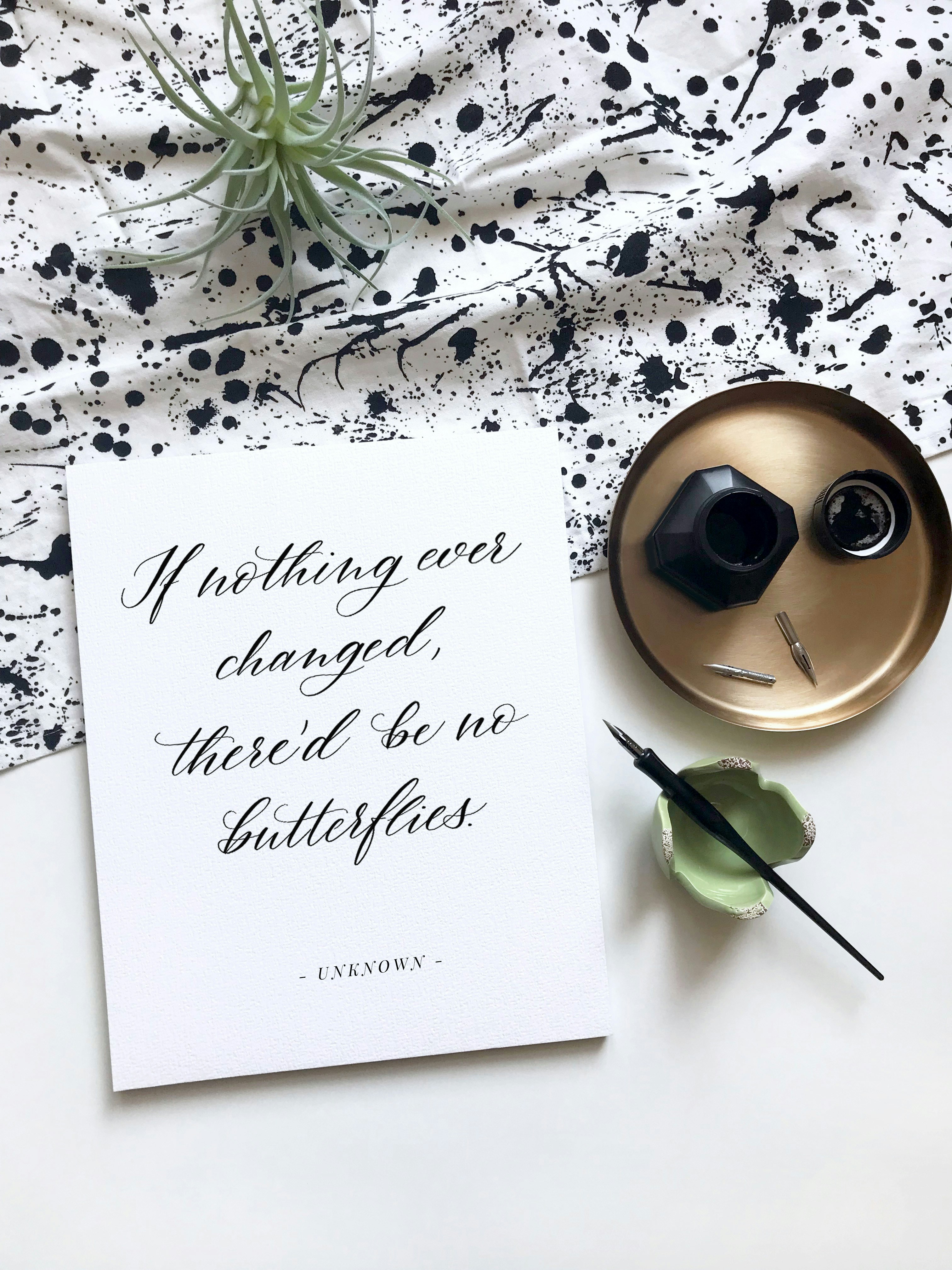
Improving Your Skills
Practice Techniques
Practice is the key to improvement in calligraphy. Dedicate time regularly to practice both basic strokes and letter forms. Experiment with different styles and mediums to broaden your skills. Practice doesn’t always make perfect, but it certainly makes progress.
Common Mistakes to Avoid
Common mistakes in calligraphy include inconsistent pressure, poor ink flow, and uneven letter spacing. Being aware of these pitfalls can help you avoid them. Remember, mistakes are part of the learning process, offering valuable lessons on what to improve.
Critiquing Your Own Work
Learning to critique your work constructively is an invaluable skill. Look at your work with a critical eye, identifying areas for improvement while also acknowledging what you did well. This self-assessment encourages continuous growth and development.
Continuous Learning and Experimentation
The world of calligraphy is vast and varied. Stay curious and open to learning new styles, techniques, and mediums. Experimentation is the key to finding your unique voice and style in calligraphy. The more you explore, the more you grow as an artist.
Exploring Different Calligraphy Styles
Traditional Calligraphy Styles
Traditional calligraphy styles, such as Copperplate, Spencerian, and Gothic, offer a rich history and a structured approach to lettering. Learning these styles can deepen your understanding of calligraphy fundamentals and technique.
Modern Calligraphy Styles
Modern calligraphy styles are characterized by their freedom and fluidity. They allow for more personal expression and can be adapted to suit any mood or message. Exploring modern styles can help you develop a unique and contemporary approach to calligraphy.
Fusion Styles
Fusion styles blend elements from both traditional and modern calligraphy, offering the best of both worlds. These styles can be highly creative and personal, reflecting the individual artist’s influences and preferences.
Creating Your Own Individual Style
Ultimately, the goal for many calligraphers is to develop their individual style. This comes with time, practice, and experimentation. Drawing inspiration from various styles while infusing your personality and preferences will lead to a unique style that is distinctly yours.
Digital Brush Calligraphy
Basics of Digital Calligraphy
Digital calligraphy combines traditional calligraphy techniques with digital tools, such as tablets and styluses. It offers the advantage of easy corrections and limitless experimentation. Learning the basics of digital brush calligraphy can open up new possibilities for creation and design.
Best Software for Digital Calligraphy
Several software options cater to digital calligraphers, including Adobe Photoshop, Procreate, and Adobe Illustrator. Each has its strengths and tools designed for digital brush creation and manipulation. Exploring these options can help you find the software that best fits your workflow and style.
Transition from Traditional to Digital
Transitioning from traditional to digital calligraphy can be both exciting and challenging. Begin with familiarizing yourself with the digital tools and software. Practice regularly, and don’t be afraid to experiment. Over time, you’ll find that many traditional techniques can be adapted to the digital realm, enriching your digital calligraphy experience.
Creating Digital Layouts and Designs
Digital calligraphy opens up a world of design possibilities. From intricate layouts to combining text with images, the digital platform allows for creativity and complexity that would be difficult to achieve by hand. Explore the various tools and features offered by your chosen software to fully leverage the potential of digital calligraphy.
Turning Your Hobby Into a Career
Developing a Portfolio
If you’re interested in turning your calligraphy hobby into a career, start by building a portfolio. Include a variety of works that showcase your skills, style, and versatility. A strong portfolio is crucial for attracting clients or employers.
Networking with Other Calligraphists
Networking with fellow calligraphers can open up opportunities and provide valuable support and advice. Join online forums, social media groups, or local workshops to connect with others who share your passion.
Working with Clients
Working with clients requires not just calligraphy skills but also communication and professionalism. Be clear about deadlines, pricing, and expectations to ensure a smooth and successful collaboration. Satisfied clients can lead to repeat business and referrals, helping to grow your career.
Freelancing vs. Working for an Agency
Consider whether freelancing or working for an agency suits you best. Freelancing offers freedom and flexibility, while agency work can provide stability and a steady stream of projects. Each has its benefits and challenges, so weigh your options carefully to decide which path aligns with your goals and lifestyle.
Modern brush calligraphy is a versatile and rewarding art form that combines tradition with personal expression. Whether as a hobby, a form of relaxation, or a professional pursuit, it offers endless opportunities for creativity and growth. By understanding its history, mastering the basics, and continuously exploring and honing your skills, you can develop a unique style that reflects your individuality and passion for the art of beautiful writing.


